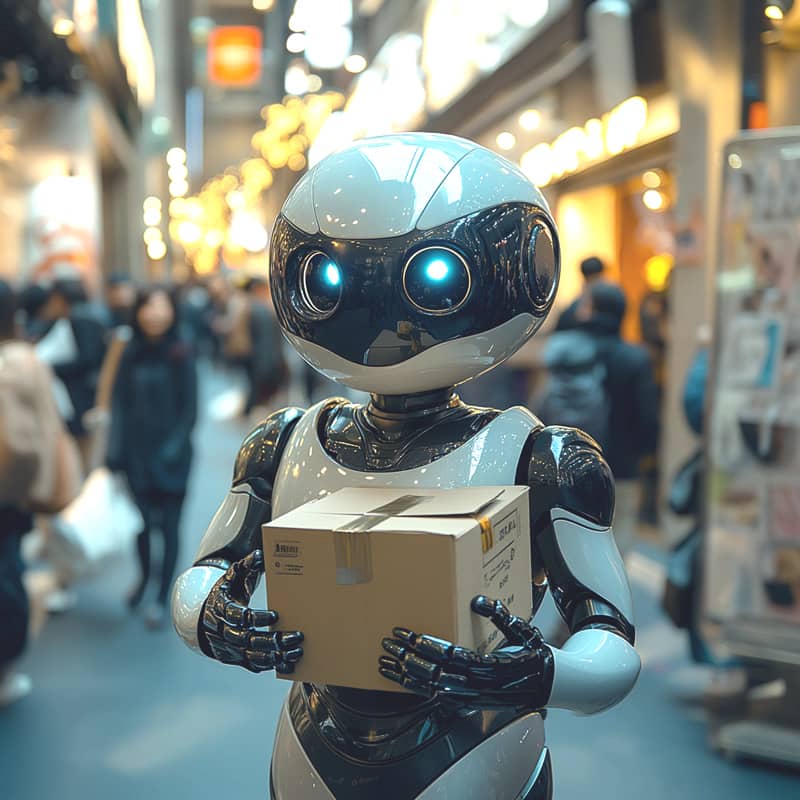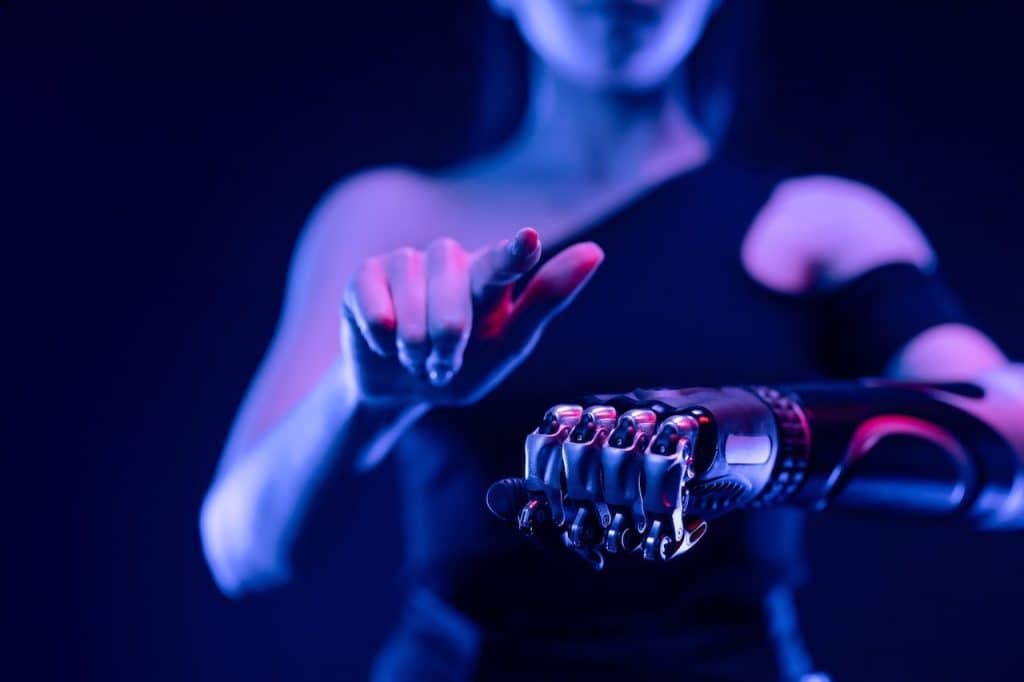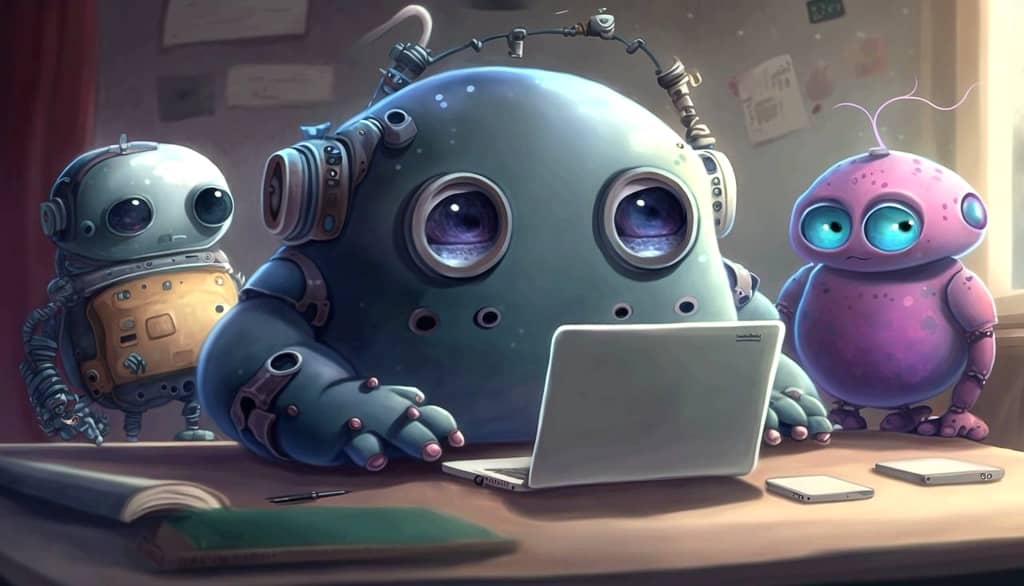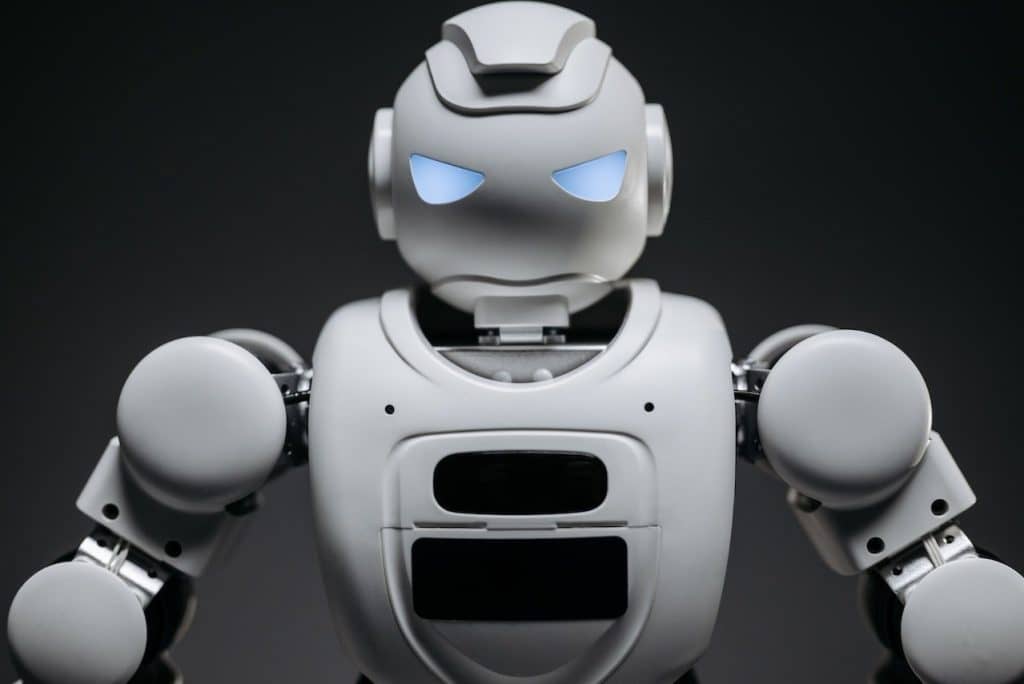There is no doubt we are advancing into a new digital era powered by artificial intelligence (AI). So it looks like we should also prepare for a future where AI-powered humanoid robots will soon walk alongside humans.
Robots are actually not a new technology. The cars we drive everyday are mostly assembled by robots and our cars keep us safe on the roads. We have already seen autonomous robots that move around with wheels, like in restaurants and warehouses. These robots have proven to be very helpful co-workers in doing mundane jobs. Other types of robots also make some jobs safer by taking over high risk tasks that endanger human workers.
— Elon Musk (@elonmusk) October 11, 2024
After decades of robotics advancement, humanoid robots have finally arrive at a pivotal point. Robotics and artificial intelligence are now poised to revolutionize and disrupt industries throughout the world. The possibility of mass producing intelligent robots raises exciting prospects but it also poses serious questions about their implications.
In this article, we’ll explore the state of humanoid robots across industries. We will discuss how mass production of robots could impact various aspects of life in a modern society. We will also touch on some barriers that could hinder the advancement of this amazing technology.
Humanoid Robots In Our Homes
I was just having a conversation with a baby boomer about the impact of AI and she thinks it is a terrible technology. She said this because it can be used to mimic a person’s face and voice to conduct fraudulent acts. She does has a point but I argue that a humanoid robot can be a great servant for a household.
A humanoid robot can especially be helpful in countries that employ a foreign live-in maid to help out with household errands or look after the elderly. Unfortunately, hiring foreign maids sometimes bring problems into the household. Some foreign maids have been known to steal from their employer and may even abscond. There have also been cases of foreign maids treating weak elderly people harshly and even hurting children.
Now imagine how some of these problems can be eliminated with a humanoid robot servant. For starters, you can program the robot servant to only respond to authorized family members. This means you can be assured that a stranger cannot command the robot to do anything without your authorization.
Unlike just a monitoring CCTV camera, you can command your robot servant to respond to situations inside your home. As a bonus, you can even program the robot to double as a security guard for your home. A smart robot is definitely an advantageous addition to a smart home security system.
These are just a few advantages of having a smart humanoid robot around the house. On the next page, we will dispel some myths about humanoid robots and look further into how they can impact some industries.
Be More Tech-Savvy With Free Computing Online Courses.
You can study free IT and computing online courses with Alison and complete the entire course with graded assessments. You only pay if you need the certificate and I may get a commission as an affiliate.

How Humanoid Robots Will Change The World
The Reality of Humanoid Robots
Before we proceed further, let’s clarify a common misconception about the advent of humanoid robots. It is important to emphasize that not everything that appeared in science fictions is reality. For example, popular science fiction movies like ‘Terminator’ and ‘I, Robot’ had given us the impression that humanoid robots are killing machines that are out to destroy mankind.
First of all, you might be disappointed to know that your typical humanoid robot cannot move as fast and agile as an average human being. In terms of intelligence, real humanoid robots are also no where as smart as what is depicted in movies. This means you will need to spend a considerable amount of time teaching your robot to recognize different objects and people and how to appropriately respond to varied situations.
On the contrary to destructive purposes, an advanced humanoid robot can play a crucial role in search and rescue operations. Imagine the tremendous help you can get from a robot that can carry heavy loads of equipment and move heavy weights like a superhuman. Such a robot will be especially invaluable in earthquake rescues. A robot that can traverse difficult terrains will also be a very useful team member in mountain rescues.
So let’s put aside the ideas of scifi humanoid robots with killing tendencies. Instead, you should watch this video that will give you a better idea of what real world robots are meant to do.
World’s Most Advanced Humanoid Robots
Video by Xplained
Career Tip: Launch a side business now to combat job uncertainties.
We are now rapidly advancing into a more advanced digital area powered by artificial intelligence and perhaps even quantum computing in the near future. As a result, many industries will be disrupted by technological innovations and it is inevitable that some jobs will be made redundant.
If you have a business idea that you have been deliberating, why not start manifesting the idea by publishing your own website or blog that powerfully expound your life aspirations or entrepreneurial ideas.
Use my affiliate links below to explore a wide variety of professional website services offered by Namecheap and I may get a commission if you make an online purchase at Namecheap’s website:
- Look for the best deals on website services.
- Get a free domain and email when you sign up for EasyWP Turbo WordPress managed hosting.
- Launch your venture with the Business Hub for digital entrepreneurs.

Current State of Humanoid Robots in Industries
Healthcare
In healthcare, humanoid robots are being used to assist in surgeries albeit not on a large scale. You may also see robots in hospitals assisting with minor patient care tasks. Elderly care robots like Robear and Pepper have demonstrated how machines can assist the elderly or people with mobility issues. Sales of these robots however did not take off and they were eventually retired. It seems that these two care robots failed in being fully autonomous and still need human intervention. This defeated the purpose of having the robots because it was actually meant to free up some of the duties of human carers.
Manufacturing and Logistics
Specialty robots have been used in manufacturing environments for decades. The machines are able to work with precision, speed and stamina that human workers just cannot match. Advanced humanoid robots like the Optimus are expected to be put to work in Tesla factories to perform repetitive and physically demanding tasks. In logistics, humanoid robots are increasingly being tested in warehousing and logistics facilities. A notable company that has embraced humanoid robots is Amazon, the retail giant. These are just a couple of examples of pilot projects that will test out the capabilities of humanoid robots in actual working conditions. It could take years for the pilot projects to advance to the next phase if they prove to be successful. So don’t worry just yet about a mass-scaled invasion of humanoid robots happening anytime soon.
Hospitality and Retail
The hospitality and retail sectors are also experimenting with humanoid robots to provide customer service. Whether or not human workers will really welcome having robot co-workers in this sector has not really been tested yet. We have already seen the failure of social robots like Softbank’s Pepper which had stopped production in 2020 due to weak demand but the cute BellaBot robot waiter is still quite popular in restaurants. As its function is mostly limited to just delivery of food and beverage to tables, restaurant service workers seem to welcome the robotic co-workers as the human workers can then focus more on attending to customer queries.
Public Safety and Defense
Looking at how advanced humanoid robots have become, you can be quite sure that governments are taking serious interest in the technology. You can certainly imagine how humanoid robots can serve as an effective law enforcer in public spaces. Equipped with facial recognition and real-time data analysis, humanoid robots can be deployed for surveillance and crowd control. In defense, advanced humanoid robots like Atlas by Boston Dynamics are being tested for combat support, bomb disposal, and search and rescue missions in hazardous environments.

How Humanoid Robots Will Change The World
Implications of Mass Production of Humanoid Robots
Economic Disruption
If humanoid robots are mass produced, one of the first things you will notice happening will be a significant shift in labor markets. You can expect industries that are reliant on human labor performing mundane and repetitive tasks to undergo phases of digitization and automation. While this normally improve efficiency and reduce operational costs, job displacement is bound to happen. The situation would force governments to rethink workforce training and potentially introduce universal basic income (UBI) policies to support displaced workers.
Social and Ethical Considerations
The widespread use of humanoid robots in everyday life would inevitably raise ethical concerns. Even spending too much time consuming social media is still a problematic issue. Thus with humanoid robots walking among us, issues such as privacy, constant surveillance, and the ethical treatment of AI-powered machines will certainly become hot topics of debate. Furthermore, the emotional connection between humans and humanoid robots could blur lines between relationship roles. If we are now concerned about how people might form overly attachments to their smartphone, what do you think the consequences will be if people in the future regard social humanoid robots as their equal counterpart?
Technological Dependence
As more businesses and consumers rely on robots, societies could face increased dependence on technology. We are only about three decades into living in the digital era and we already can sense and experience the many pitfalls of depending on technology. What happens if there is a widespread malfunction of robots and machines? Are we prepared for the cybersecurity risks involved in having our humanoid robots connected to cloud networks? These are just some of the serious questions that must be addressed before mass adoption of humanoid robots takes place.

Barriers to Advancement of Humanoid Robots
Technical Challenges
Although great strides have been made, there are still significant technical hurdles in making humanoid robots more versatile. For instance, robots still struggle with human-like dexterity, fine motor skills, and nuanced decision-making. Even if we managed to perfectly replicate the physical movements of a humanoid robot to a human being, mimicking human intelligence is actually more difficult than it appears. For instance, most of us do not pay much regard to our common sense but for a dumb machine, it is a powerful attribute that scientists and engineers have not yet been able to satisfactorily replicate in a machine. If a humanoid robot accidentally harms a person because it misinterpreted a command from its human owner, the humanoid technology could very well be banned.
High Costs Of Humanoid Robots
Building humanoid robots is expensive due to the intricate engineering and advanced materials required. The Tesla Optimus is expected to have a retail price of about $20,000 to $30,000 and that sounds reasonable as some cars even cost more than that amount. However, we buy cars because we know we can rely on it to serve our purposes. If humanoid robots do not at least meet our expectations, then consumers will surely abandon it. Mass production would lower costs, but initial investment remains high. For now, accessibility to humanoid robots is normally limited to universities, wealthy corporations and government organizations.
Legal and Regulatory Issues
There is currently no comprehensive legal framework for robots operating in human environments. This means that getting to own a humanoid robot may require jumping through many hoops. Just take for instance liability issues—such as who is responsible when a robot malfunctions or misbehaves in public? What if the robot causes harm to people or animals? Regulatory issues will definitely be a major hindrance before mass adoption can take place.
Public Acceptance of Humanoid Robots
For humanoid robots to succeed, they must be widely accepted by the general public. Concerns about robots taking over jobs, privacy invasion, or simply being “creepy” will slow down their advancement in society. Did you know that the Google Glass project failed partly because people were concerned about someone who is wearing the device secretly recording them in public spaces? Even if regulations give the green light for regular consumers to own a humanoid robot, the reactions of people might stop you from taking your humanoid robot to the supermarket to help with the groceries.

How Humanoid Robots Will Change The World
How Consumers, Businesses and Governments Can Benefit With Humanoid Robots
Despite its limitations, having a humanoid robot in a household could dramatically improve daily life. These robots can assist with household chores and do a much better cleaning job than a robot vacuum mop. They can also act as personal assistants, and provide care and protection for children or the elderly. The potential to automate mundane tasks, provide round-the-clock companionship as well as double as a security guard may also strongly appeal to individuals who live alone. Additionally, humanoid robots can serve as a crucial aid for a person whose personal mobility is compromised, such as in the case of disabilities.
Companies that adopt humanoid robots can gain a competitive edge through improved efficiency and reduced costs, particularly in the manufacturing and logistics sectors. In factories and warehouses, humanoid robots can work tirelessly in dangerous or monotonous environments to minimize risks and improve productivity. In industries like retail, robots can enhance customer service experiences by performing routine tasks. This will then allow human employees to focus on high-value work.
Governments can benefit from humanoid robots in several ways. For example, a intimidating humanoid robot patrolling the streets will boost public safety. In public spaces, robots can act as surveillance units, detecting criminal activities or potential hazards, which they can then relay in real-time to human operators. In emergency situations, robots could serve as crucial aids in helping rescue victims or manage dangerous environments.
Tech Tip: Consider .IO domain name.
Short and memorable, .io is fun to say. If your .com has been taken, there’s a good chance you will be able to register your preferred name with a .io domain. Use my affiliate link below to register your .IO domain and I may earn a commission if you make an online purchase at Namecheap’s website.
Get the tech-friendly domain today – 12% off .io registration!
Conclusion
The advancement of humanoid robots holds incredible promise across various industries e.g. healthcare, retail, manufacturing and defense. The implications of mass production of humanoid robots however present both opportunities and challenges.
The potentials of machines to enhance work productivity, improve quality of life, and bolster public services sounds very attractive in a modern society. However, significant barriers such as high costs, technical limitations, legal and regulatory questions, and public acceptance hinder adoption. If humanoid robots become more prevalent, businesses, governments, and consumers alike must carefully consider how to integrate these powerful tools into society to maximize their benefits while minimizing potential risks.
Humanoid robots are no longer just a futuristic concept, albeit they are no where as advanced as what is depicted in science fiction movies—yet, their potential is vast. The future will depend on how wisely we decide to adopt and regulate this remarkable technology. Ultimately, it should be mankind who should rule over machines, and not the other way round.






